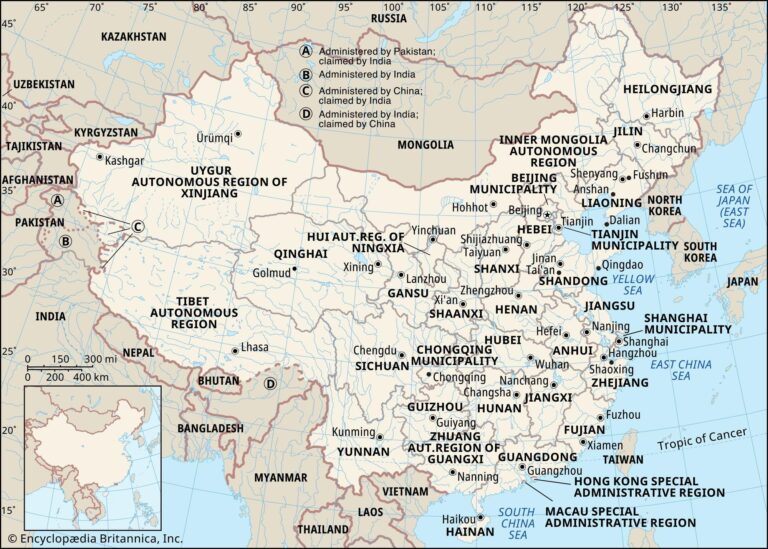As tensions continue to simmer across the Taiwan Strait, analysts are reconsidering the likelihood of a full-scale Chinese invasion of Taiwan. Instead, a growing body of experts suggests that Beijing might opt for a maritime blockade-a strategy aimed at isolating the island economically and politically without direct military confrontation. But how would such a blockade be implemented, and could it effectively achieve China’s strategic objectives? This article examines the mechanics of a potential Chinese blockade of Taiwan, its feasibility, and the wider implications for regional security and global trade.
China’s Strategic Calculus Behind a Taiwan Blockade
China’s consideration of a blockade over a full-scale invasion represents a calculated move designed to project power while minimizing international backlash and military risk. Rather than deploying a costly amphibious assault across the Taiwan Strait, a blockade would leverage the People’s Liberation Army Navy (PLAN) and Air Force to restrict Taiwan’s access to vital sea lanes and airspace, effectively isolating the island. This strategy aims to cripple Taiwan’s economy and morale by cutting off imports, exports, and critical energy supplies, while simultaneously increasing global pressure on Taipei’s allies to refrain from direct military support.
The mechanics of such a blockade would rely heavily on controlling key maritime chokepoints and conducting persistent aerial patrols to deter foreign intervention. China would likely employ a combination of:
- Naval patrols around the Bashi Channel and southern Taiwan straits
- Deployment of anti-ship ballistic missiles to deny access
- Electronic warfare to disrupt Taiwan’s communications and surveillance
- Covert operations to undermine logistical support within Taiwan
However, the effectiveness of such a blockade remains uncertain due to Taiwan’s robust asymmetric defense capabilities and the global community’s potential to mobilize alternative supply routes. The balance between applying pressure and provoking a broader conflict makes the blockade a high-stakes gambit, with outcomes hinging on international diplomatic responses as much as military maneuvers.
Mechanics of a Modern Maritime Blockade in the Taiwan Strait
China’s approach to enforcing a maritime blockade around Taiwan would likely leverage a combination of advanced naval assets, air superiority, and cyber warfare capabilities to restrict the island’s access to vital sea lanes. This blockade wouldn’t rely on a traditional close-sea surround but rather on establishing key control points, including strategic chokepoints in the Taiwan Strait and the broader South China Sea. Employing a layered defense system, Chinese forces would deploy submarines, surface combatants, and anti-ship missile platforms alongside long-range maritime patrol aircraft to monitor and interdict commercial and military traffic. Enhanced cyber operations might target Taiwanese port management systems, shipping communications, and supply chain software to disrupt logistics. These elements combined aim to create an effective barrier without full-scale amphibious warfare, minimizing initial confrontation risks while exerting economic and military pressure.
Effectiveness hinges on a few critical variables, chief among them being Taiwan’s resilience and international response. Taipei could attempt counter-blockade tactics like deploying mines, leveraging asymmetric naval forces, and maintaining a high operational tempo to keep shipping lanes open. Meanwhile, countries like the United States and Japan face the strategic dilemma of balancing support for Taiwan’s freedom of navigation with the risk of escalating into direct conflict. Below is a simplified overview of how such a blockade might be orchestrated:
| Blockade Component | Function | Chinese Assets |
|---|---|---|
| Maritime Patrol | Surveillance and interception | Submarines, frigates, patrol aircraft |
| Air Superiority | Area denial and target coordination | Fighter jets, AWACS, missile batteries |
| Cyber Operations | Disrupt logistics and communications | State-sponsored hacking units |
| Economic Pressure | Choke supply chains and imports | Trade embargoes, port blockades |
Assessing the Potential Impact and Global Implications of Economic Isolation
The imposition of an economic blockade on Taiwan would not only sever the island’s vital supply chains but also ripple across the global economy. Taiwan is a pivotal node in the semiconductor industry, supplying critical components used in everything from smartphones to automobiles. A blockade could trigger severe shortages of semiconductors, disrupt manufacturing worldwide, and inflate prices across multiple sectors. The economic ramifications wouldn’t be contained within East Asia; they would stretch as far as North America and Europe, where industries heavily reliant on Taiwanese technology face potential shutdowns.
Key global consequences include:
- Interruption of semiconductor exports leading to a slowdown in technological innovation worldwide.
- Heightened tensions in international trade alliances and potential sanctions escalation.
- Disrupted maritime routes affecting oil and goods shipments through the South China Sea.
- Increased volatility in global stock markets and currency exchanges.
| Sector | Potential Impact | Global Reach |
|---|---|---|
| Technology | Semiconductor shortage | Global |
| Shipping | Route disruptions | Asia-Pacific, Middle East |
| Energy | Oil price volatility | Worldwide |
| Finance | Market instability | Global |
In Retrospect
As tensions across the Taiwan Strait continue to simmer, the prospect of a Chinese blockade remains a significant strategic option short of full-scale invasion. Such a blockade could leverage Beijing’s geographic proximity and naval capabilities to exert sustained economic and political pressure on Taiwan, potentially isolating the island from global markets and allies. However, the effectiveness of this approach would depend on a range of factors including international responses, Taiwan’s resilience, and the risks of escalation. As the world watches closely, understanding the mechanics and implications of a potential blockade is essential to grasping the complex dynamics shaping cross-strait relations in the years ahead.




